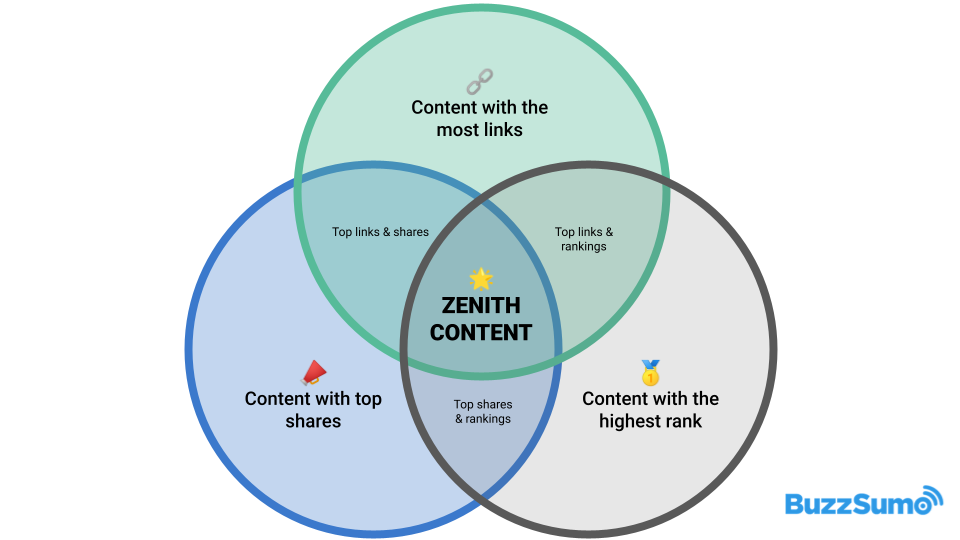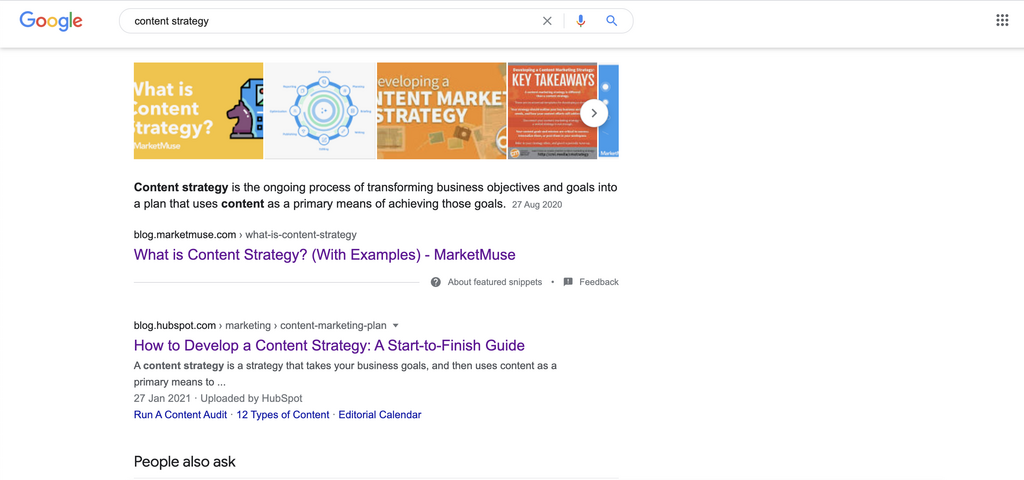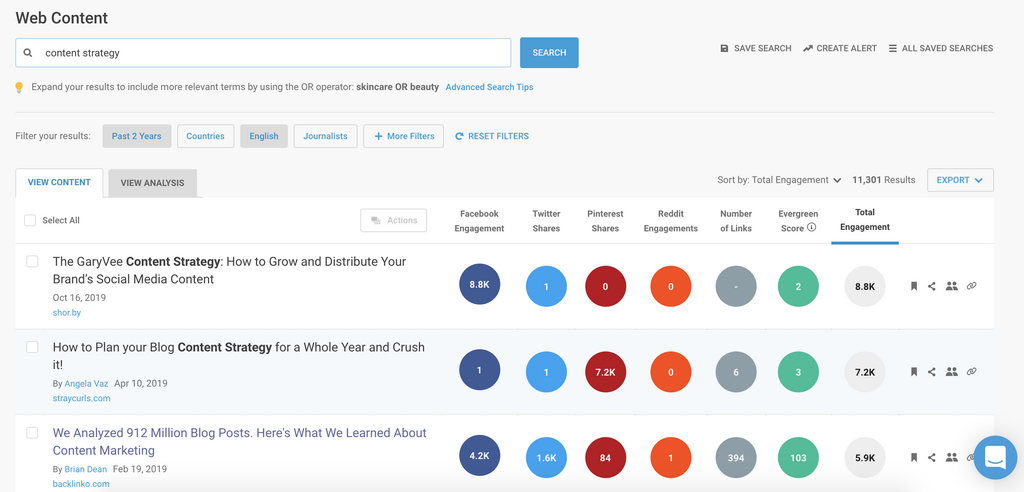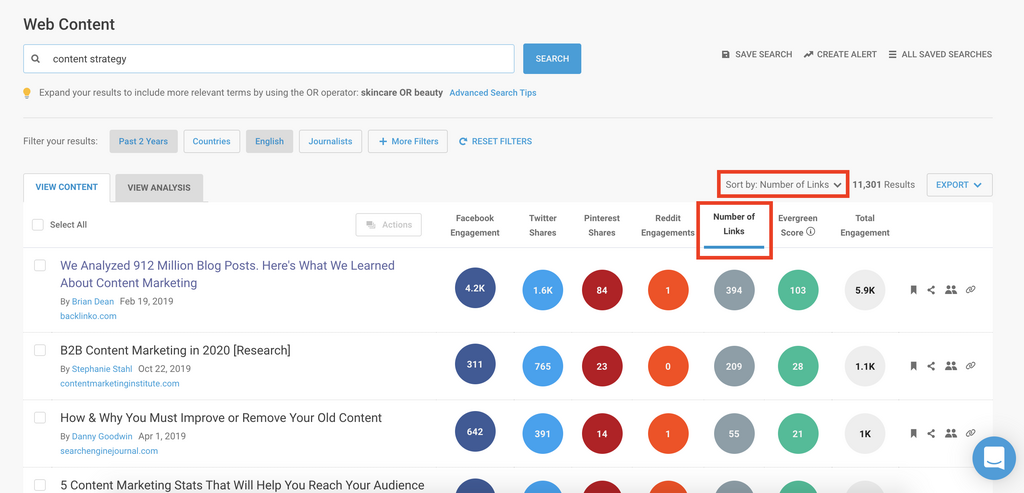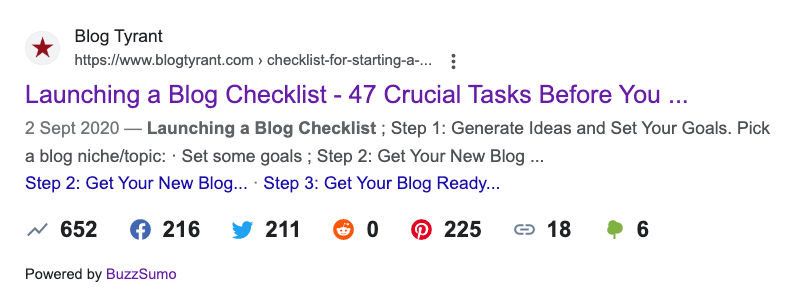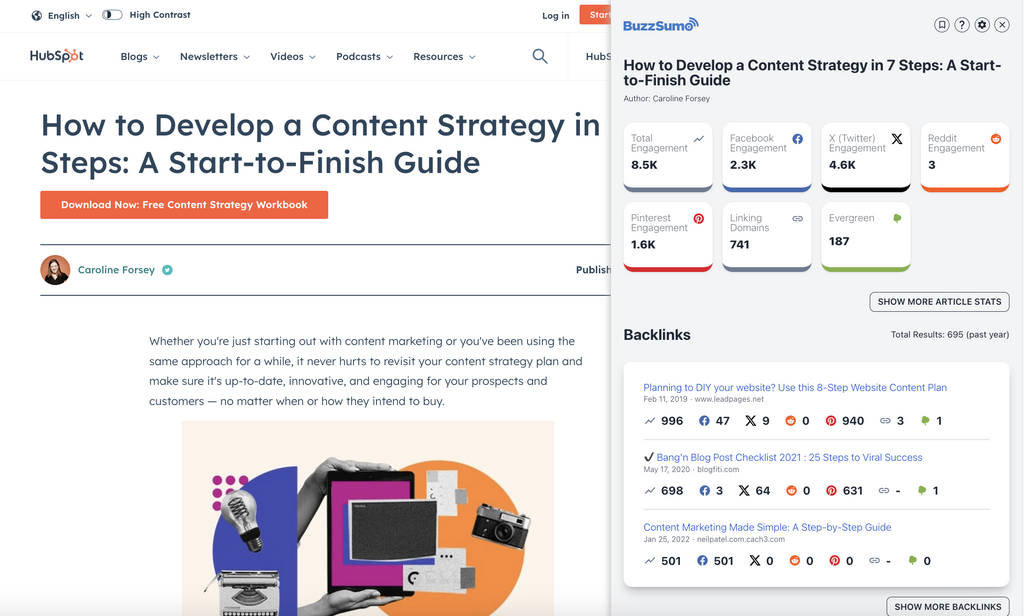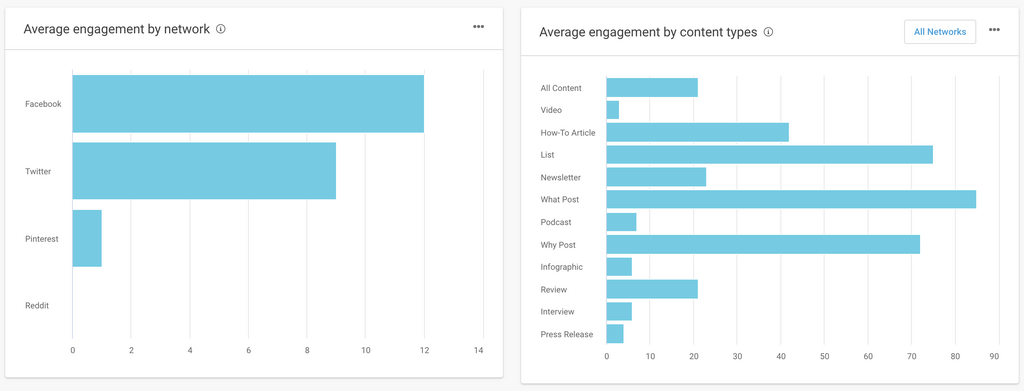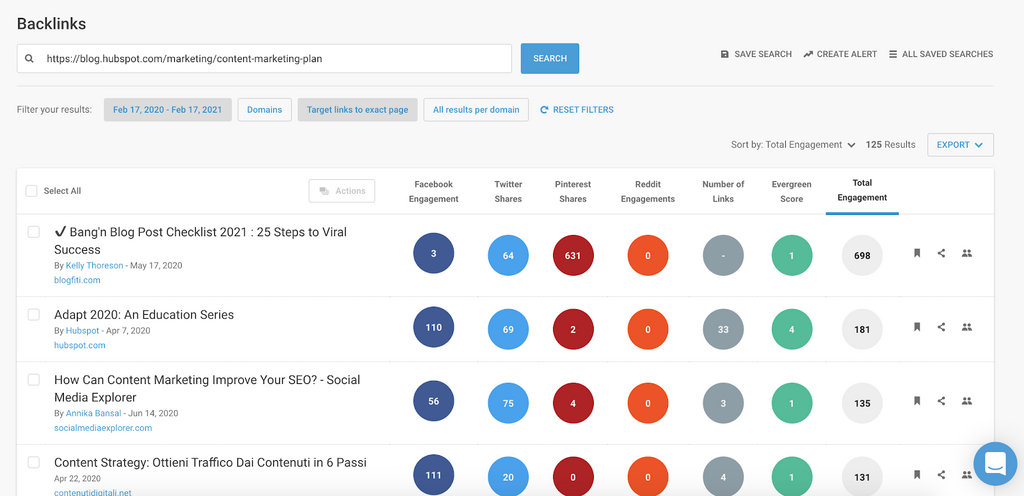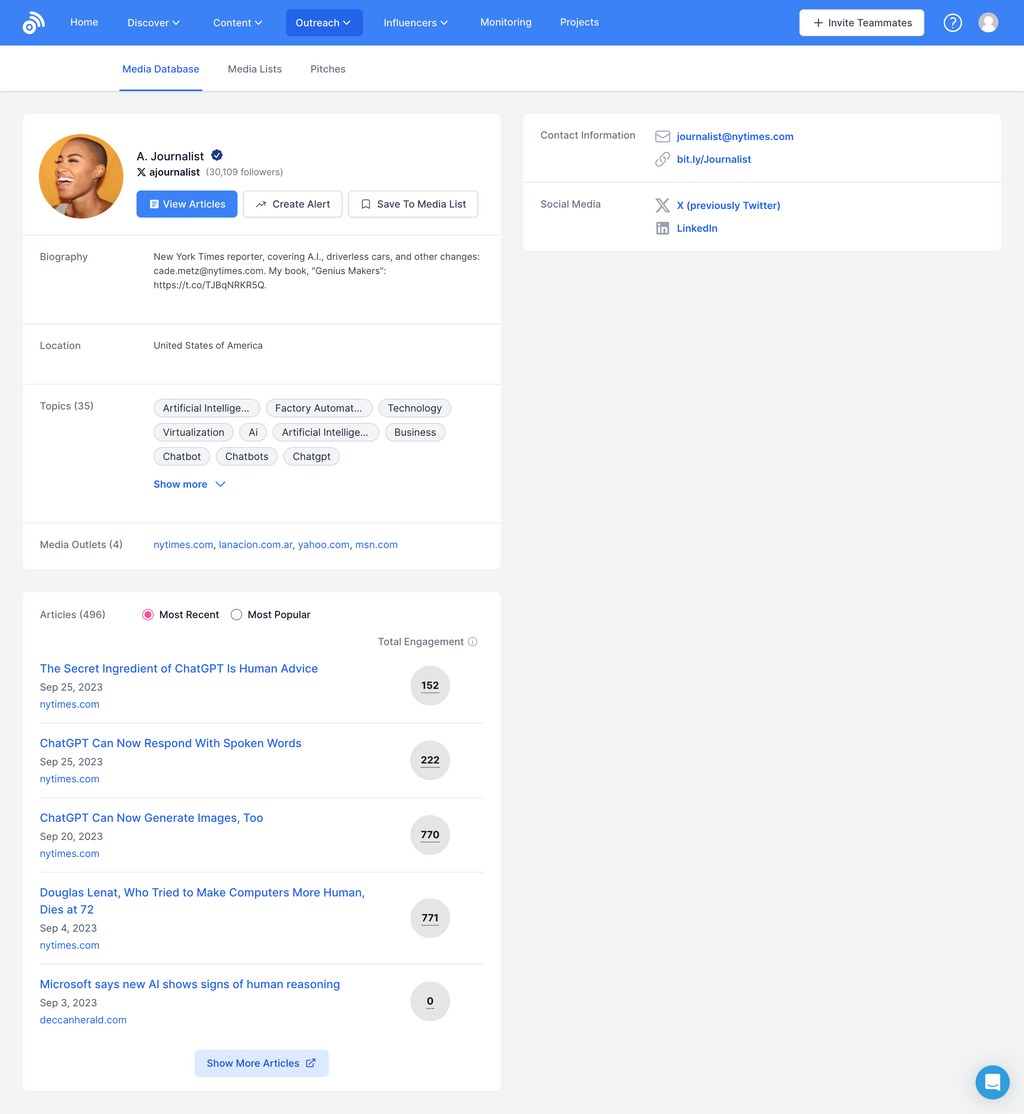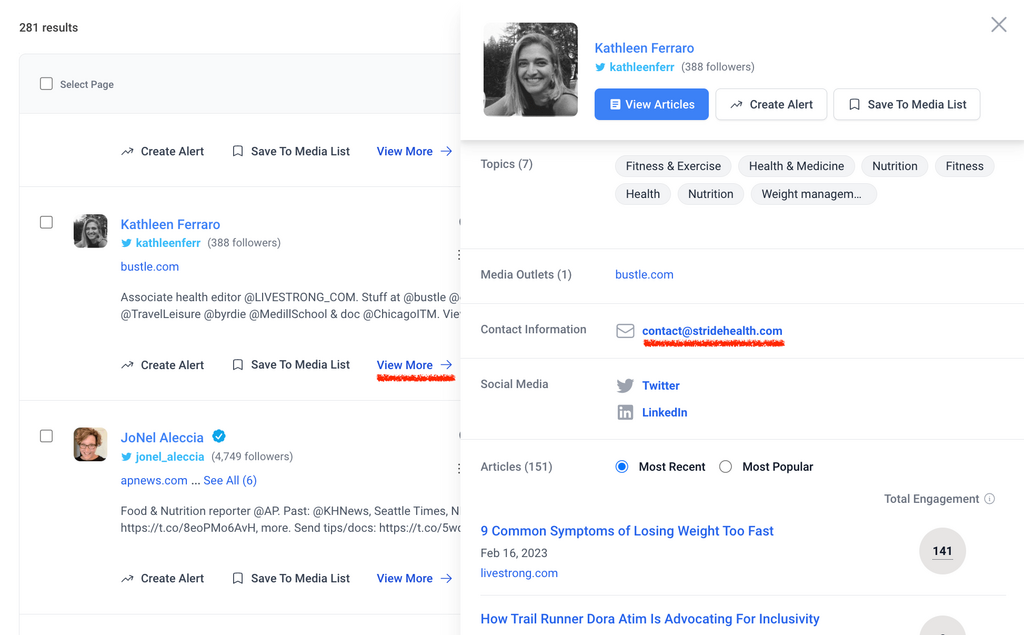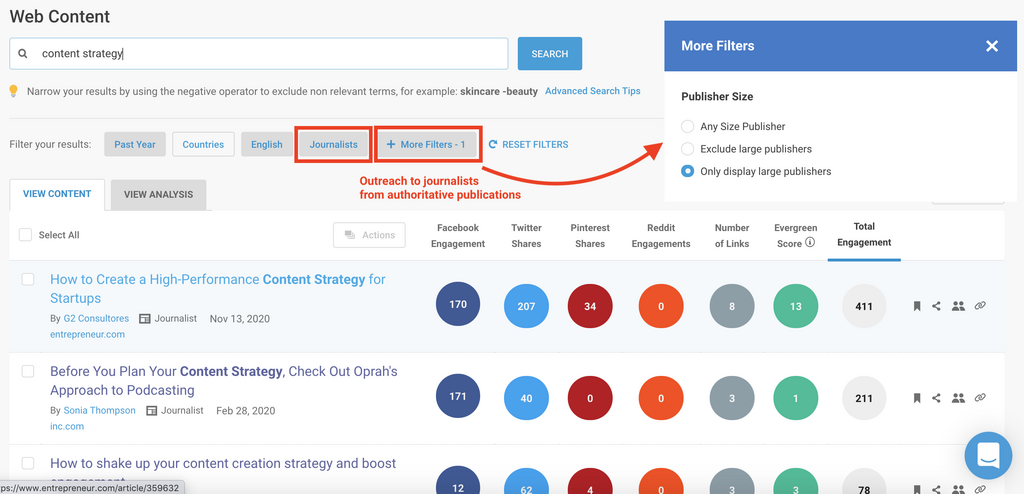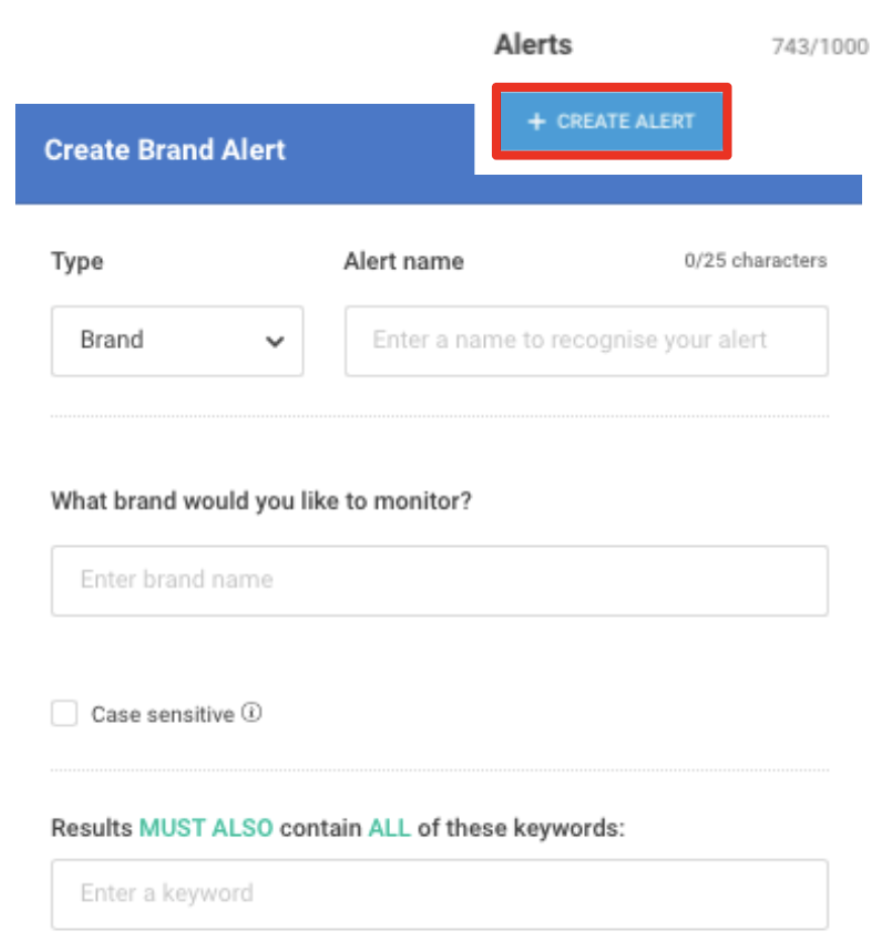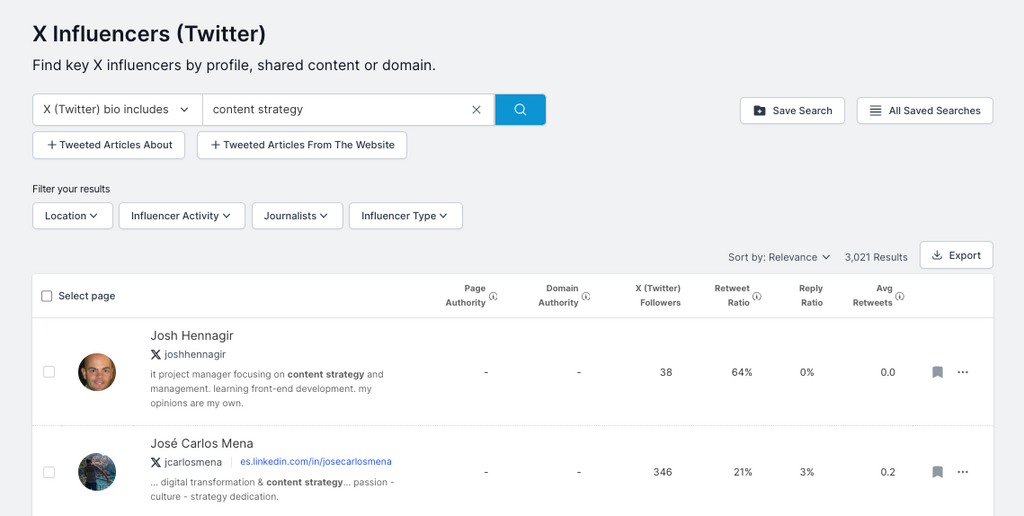Updated September 28th 2023
Why The Skyscraper Technique Is More Important Now Than Ever
In 2014 Brian Dean, founder of Backlinko, coined the term Skyscraper Technique to describe a content creation and distribution strategy...
The three key steps to the skyscraper technique included:
Step 1: Finding link-worthy content
Step 2: Making something even better
Step 3: Reaching out to the right people to encourage links and shares
So, in the same way that cities the world over are forever battling it out to build the biggest (read: best) skyscraper, Brian Dean proposed that we too should be focusing on outdoing the best content in our niche.
But this technique was just as much about publicizing content as it was about creating it. It involved scouring the backlink profile of the skyscraper content, and outreaching to those referrers to request links.
In other words, pinching some 🔥 hot leads 🔥
This theory took the marketing industry by storm, and it wasn’t long before we were all attempting to build our own skyscrapers.
A year after that in 2015, Spark Toro and former Moz founder, Rand Fishkin, came up with a very similar strategy called 10x Content.
It involved creating content that was 10x better than the top 10 pieces of content in search and on social, within a certain niche.
But that was nine years ago. Should we still be creating and distributing content in this way?
I think so, yes.
Here’s why…
Search engines are becoming OBSESSED with quality content
Thanks to Google E-E-A-T algorithms, Google is plugging away in the background analyzing millions of pieces of content to understand what authority, relevance, and quality looks like.
It’s essentially an auto-updating, self-learning algo bot 😳
Gary Illyes, Google’s Webmaster Trends Analyst, actually described Google E-E-A-T as “Millions of baby algorithms”. Only mildly terrifying.
E-E-A-T is Google’s official guidelines for delivering a quality experience online. It’s about four key things:
- The first-hand experience of the creator
- The quality of the content
- The authority of the creator
- The website itself
Aside from its self-learning algorithm, Google employs 10,000 people as ‘Quality raters’ around the world.
Remember when search engines were uncrowded and uncomplicated? When your ideas were still unique and drove high traffic with low effort, or when you could add a title tag and you'd be up and away! Top of page one, no problem?
Well the glory days are over.
Content now has to satisfy users, quality raters, and those creepy “baby algorithms” for it to be successful.
And it’s not just search engines...
We’re seeing significantly more algorithm updates on Facebook and all social networks. Our content has to work harder than ever before.
We’re also better at understanding what quality content looks like
It's not just the bots getting smarter. We are too. We've got tech-up-to-our-eyeballs, we're far savvier than the audiences of yesteryear. WE KNOW TOO MUCH.
Success is not just about the quality of our content – it’s about our connections
So we know that Google E-E-A-T is concerned with experience, authority, and semantic connections when deciding whether to rank our content.
But Rand Fishkin published a theory that, one day, links will no longer be a vital part of the equation.
In fact, he says that they’ll be replaced by "inferred links" – semantic references connecting topics to a brand and its content.
It’s not just about creating content that is good enough to build links anymore. It's about crafting content that is so good, it gets you recognized by authoritative sources that have the power to push your content even further.
Nine-ish years down the road since the Skyscraper Technique, and the focus on both quality content and connections has only been magnified.
So I don't know about you, but I'm feeling the pressure 😅
Although these theories are clearly still relevant, there’s definitely some steps we can take to make them more 2023 friendly. I’ll walk you through them below.
1. Find your "zenith content"
So the first step, according to Brian Dean back in 2014, is to find link worthy content in your niche.
But why stop there?
Here at BuzzSumo we’ve ‘Skyscraper-ed the skyscraper technique’ so-to-speak, and extended the formula for creating a top-tier piece of content in 2023. You just need to hit this sweet spot:
- Find the top linked content
- Find the top shared content
- Find the top searched content
- And most importantly: Find the content that is top in all three categories
This is the holy grail of skyscraper content and sort of a hybrid of Rand Fishkin’s strategy and Brian Dean’s theory. Think of it as "zenith content".
‘I would perform the search query in two places. One is in Google and their search results, and the other is actually in BuzzSumo, which I think is a great tool for this, where I can see the content that has been most shared. So if you haven't already, check out BuzzSumo.com.’ Rand Fishkin, Founder, Spark Toro
If I find a piece of content that ticks all of these boxes (ie. shares, rankings, and links), then you can bet that’s the skyscraper I’m building on.
But how do you actually do that?
First of all, let’s look at how you’d go about finding the top content in each category.
1. Search the topic you want to write about in Google to find the top ranking content
In search, the skyscraper for the topic ‘Content strategy’ is from Market Muse.
2. Search the same topic in BuzzSumo’s Content Analyzer to find the headlines with the most social engagement
In social, the skyscraper for the topic ‘Content strategy’ is from Gary Vaynerchuk.
3. Sort those Content Analyzer results by ‘Number of links’ in BuzzSumo to find the top linked content
When it comes to links, the skyscraper for the topic ‘Content strategy’ is from Brian Dean himself.
So now you know how to find the top content in each area individually. But how do you locate that piece of content that ticks all three boxes?
Finding "zenith content"
Using BuzzSumo’s free Chrome Extension, you can discover shares and links for top ranking content as you search.
I like to open new tabs for each piece of content ranking on page one of Google, and hit the chrome extension to assess relative shares and backlinks.
In doing so, I am not only honing in on the top content in search, I’m diving deeper to find the "zenith content" that has seen success in all three areas.
While analyzing Google results for the term ‘Content strategy’, for example, I found that the second top ranking piece of content was actually the most shared and linked to out of all content on page one of the search engine, and it came from Hubspot.
If I set out to create a ‘Content strategy’ guide, I now know that that is the one to beat.
2. Build something better than "zenith content"
The whole point behind the Skyscraper Technique is to create content that is so useful and relevant, others can’t help but refer back to it.
But how do you do that? Rand Fishkin suggests we ask: What’s missing?
Take a look at the piece of "zenith content" and think about what it’s lacking. Is it…
- Questions
- Intent
- Detail
- Visuals
- Quality of writing
- Authority (ie. sources)
- Good UX
And how can you build on or improve that?
Come up with a unique format
There’s no doubt that coming up with a unique content idea and format is far harder in 2021.
In fact, I just checked the entire BuzzSumo Content Analyzer database, and found that all content published and shared on social amounts to has grown by 64% since 2016.
| All Content | 2016 - 2017 | 2020 - 2021 | Percent uplift |
|---|---|---|---|
| Articles Published | 268,595,008 | 439,444,995 | 64% |
| Total Engagement | 44,669,980,013 | 83,895,177,567 | 88% |
| Avg Engagements | 166 | 190 | 14% |
There’s a ton more competition, and not a ton more average engagement. Your content needs to stand out.
One way to decide what form your content will take is to analyze your focus topic in BuzzSumo’s Content Analyzer, and hit the Analysis Tab.
This report will show you the top formats that similar content most commonly takes.
You shouldn't necessarily copy these formats, but it's important information to know so that you can learn from the data and rework old ideas.
Presenting your skyscraper content in a unique and visually engaging way will give you an instant competitive advantage when it comes to capturing people's attention.
Can you make your content interactive? Can you rework an existing format in a new way? 360 Learning did just that when they created 'Onboarding Joei' - the first ever B2B docuseries focusing on the realities of being a Content Director in a hypergrowth startup.
At BuzzSumo, we did a study on what it takes to create content that gets both links and shares. Our findings showed that you should avoid creating content such as quizzes and simple list posts, and instead focus on longer evergreen content that has more intrinsic value.
Make sure it's better designed
Both Brian Dean and Rand Fishkin stressed the importance of making sure your content is better designed than the piece you're looking to supersede.
Flash forward nine years, and that hasn't changed. Google is more intelligent now, and is even better at understanding when a user is having a poor UX.
In fact, in May 2020 Google prioritized UX as a key ranking signal via the Core Web Vitals update, so if it notices that users are having a poor experience on your page, it won't rank that page as highly.
Here's some awesome facts from BuzzSumo & Visme that prove content visualization is key:
- Articles with an image once every 75-100 words get double the amount of shares of articles with fewer images.
- Articles containing images are viewed 94 percent more than those without.
- Blogs that integrate video attract 300 percent more inbound links.
- Video is 53 times more likely to generate a first-page Google ranking than other web content.
Make it longer > Match intent.
In 2014, Brian Dean recommended we make our new content longer.
While more thorough or deeply researched content is likely to land better, what's even more crucial in 2021 is that you're answering the right questions and better matching the intent of the audience.
Analyzing skyscraper content will help you understand exactly what users want in relation to your focus topic.
Make content that's more up-to-date > Match intent.
Another element to the Skyscraper Technique was creating content that was more up-to-date.
Should that still be a focus in 2023? Let’s take a look.
Google is able to rank brand new content quickly due to the Caffeine Web Indexing system, which it released in 2009 - so this hasn't changed since Rand and Brian penned their theories.
In fact, Botify studied the data in 2019 and found that fresh content gets crawled more often and ranks for more keywords.
That being said, Google doesn't just promote fresh content to the top of the SERPs. It ranks based on how useful the content is in matching the intent of the user.
The exception to this rule is Queries That Deserve Freshness (QDF). These are topics where user intent is concerned with freshness ie. The news or product reviews.
According to Google, regularly republishing content that hasn't actually been updated is a no-no.
“As a user, recognizing that old content is just being relabeled as new completely kills any authority that I thought the author / site had. Good content is not lazy content. SEO hacks don’t make a site great. Give your content and users the respect they deserve.” John Mueller, Search Advocate, Google
One great thing about BuzzSumo's Content Analyzer is that you can see the date the post was originally published – even if it is hidden on the actual article or has since been updated.
From this I can see that the Hubspot "zenith content" I want to beat is showing as a piece of content on Google published in 2021.
However, BuzzSumo’s Content Analyzer tells a different story, showing a publication date as far back as 2015.
There are three ways of looking at this:
- If this content is being republished periodically without actually being updated, Google might penalize it. That means I'm in with a good chance of beating it.
- If this content is being republished and has been updated efficiently, I'd be wise to check out what has actually been updated, and use that same tactic / topic in my own content (using something like The Wayback Machine)
- This content is so good it’s been hanging around for six years. I'm going to have to work really hard to top it.
When it comes to updating content, try to rewrite outdated findings and provide unique and relevant information.
Decide on your angle
Skyscraper content that tends to work really well includes original research / theories, proprietary data, comprehensive studies and regular reports.
As marketers, we love data backed content to justify our decisions, so providing this research will likely make your content very popular.
But I think there’s something key to consider here – creating content for the sake of likes and links can have the adverse effect. And when you’re looking to create skyscraper content, it gets even more dangerous, because it’s so easy to get hyper focused on what you want from the end result.
When you obsess too much over the outcome or creating The Best Content Ever, you begin churning things out to appease the algorithmic overlords or the hive mind that is Twitter / X. You become less intrigued or forget to be excited by your own content. And it goes without saying if you’re not excited, then your reader won't be either.
That being said, you don’t always have to be saying something profound. It’s likely if you have a theory on a topic, others will have had it too. Start with a personal / audience question or observation, study it with data, add your own personal take and recommendations, and think about how you can create an emotional response, that will make your content really resonate – ie. through storytelling, anecdotes or examples.
Marketing thought leaders like Rand Fishkin, Ross Simmonds and Brian Dean do this brilliantly. Their content is led by their own interests and their audiences' questions. There’s a real sense of transparency and "figuring it out together". If you can do this in your new "zenith content", you’re onto a winner.
So, to recap so far, skyscraper content should be
- Unique in its format
- Better in its design
- Intent driven
- Data informed, not outcome obsessed
- Recognizable, but with a twist or new angle
- Authentic, human & relatable (your voice, your ideas)
- Curious (answers questions and solves problems)
If you need more inspiration for your content "angle" beyond your own ideas, then think about how to get into the minds of your audience.
Needless to say the better you understand their job, workload, questions, pain points and struggles, the better your content will land.
One way you can find this info out is by exploring the questions your audience are asking around your topic across forums like Reddit, Quora and comment sections of blogs. I use BuzzSumo’s Question Analyzer to access the widest range of questions in one place.
Chances are if these questions are being asked, they aren't being answered elsewhere. This can form the basis of your unique "angle", if you don't already have one.
You can also use Google’s People Also Ask, related search results or social media listening through platforms like Brandwatch, to better understand the matters that audiences are trying to get to the crux of.
3. Get your bigger & better skyscraper content out there
In 2014 this part was all about link building. In 2023, it's about relationship building.
With Google’s prioritization of experience, authority, relevance and quality, building relationships and trust through quality content is paramount to online success in 2023.
You not only want to get your new piece of awesome content out there to people who will care enough to share it. You want to build relationships so that these references are easier to come by in future.
Marketing expert Steven McDonald makes a great point about link building in 2023. He says:
Link building IS relationship building. Once you understand this, you approach it A LOT differently. Most don’t understand it…It’s why so many link-building projects fail. You ask first, instead of giving.
He urges PRs and marketers to do things a little differently, by giving first.
Meaning? Give out a backlink to the content you want to earn links from.
I like to call this strategy pay it forward link building.
Find the keywords your target publication is struggling to rank on page one or position one for, and then drop a keyword-rich anchor link back to them.
Here's how you can do that with BuzzSumo.
- Head to BuzzSumo's Keyword Tool
- Search the domain of the publication you want a link from
- Sort by rank
- Find a keyword their struggling to rank for – either on page one or position one
- Take that keyword and search your own site for it
- Drop them a link via that keyword
- Reach out to let them know
- Follow-up with your own backlink request
Stephen McDonald recommends writing something like this:
Hey (their name),
I’m (your name) and I work on SEO and content at (company).
I noticed you are trying to rank for (keyword) in Google.
I love your article on (keyword), and so I’ve just added a link from my website to help you rank better. Here’s the post I added a link to: (your post URL).
Hope it helps!
And then, once they respond positively, he suggests to reply with:
Hey (their name),
You're welcome!
I noticed you write about (your target keyword) on the website.
Any chance you’d be open to linking to our article below?
(Your post URL)
(Preferred anchor text)
Thank you, (their name). I appreciate it.
While Google doesn't advocate for "Links for links" practices, Steven explains that it won't negatively impact your content performance.
If you don't yet have a list of people to reach out to, you can get one pretty easily in BuzzSumo.
Just drop the URL of your original piece of skyscraper content - or indeed any URL / competitor domain - into the Backlinks Tool.
To build your list even further, you can take a look at the top sharers of that content and reach out to them too.
Personalize your outreach
When you’re outreaching to someone, a great way to spark engagement is to reference their content. In BuzzSumo you can find out what they’ve written in three ways:
1. Find the content they’ve written referencing the "zenith content" you’re trying to usurp (this process is the same as above: ie. drop the content URL into the Backlinks Tool).
2. Click on their name from the Backlinks Tool to do an author search and see if they’ve written anything else on the same topic before.
3. If they’re a Journalist, search their name in our Journalist Database and see the top content they’ve written - plus other details that will help you personalize your pitch, including their top publications.
You can then move on to explain why you’re contacting them, ie:
“I notice you shared / linked to / write about this kind of content”.
When it comes to scaling that outreach, you can get a hold of contact details via the Journalist Database.
Prioritize relationship building with authoritative contacts
Some contacts you outreach to will have the ability to push your content further than others – ie. influencers or journalists that write for top-tier publications. It’s wise to prioritize them in your outreach.
The quality of both your content and outreach is even more important in this case. You want to build a strong relationship, so that thought leaders will continue to advocate for you in future.
In fact, outreaching to journalists or top influencers before you’ve even finished producing your content will demonstrate that you value their input.
This is a key way to build relationships and engagement, as people are far more likely to promote something they’ve been a part of. And it’s a proven tactic – our cornerstone content went viral a few years back for this very reason.
So, how do you find these contacts?
Find journalists
Head to the Content Analyzer in BuzzSumo, search your skyscraper topic and apply two filters: the Journalists filter and the Publisher Size filter.
Track the performance of your outreach and distribution efforts by setting up Alerts for your content and backlinks. In doing so, you can monitor each time your content is shared, referenced, and mentioned in articles online.
Find top influencers
Head to the X Influencers part of BuzzSumo and enter a topic in the "X / Twitter bio includes" search. This will bring back a list of the top influencers, sorted by relevance.
Chances are your content will cover more than one topic, so it’s a case of repeating these outreach steps for all relevant topics, to build a bigger net of contacts.
The more references you can build from a variety of sources, on a variety of related subjects, the more of an authority you will appear in the eyes of both Google and your audience.
Creating top notch content isn’t easy, but it’s even more of necessity in 2023 if you want to succeed online.
Got an old piece of skyscraper content? Find our how to refresh your content in our guide.
Let us know on X / Twitter, Facebook or LinkedIn how you approach the Skyscraper Technique. We’d love to hear your tips and opinions. Needless to say, you can repeat all of the steps above yourself – completely free of charge – when you sign up to BuzzSumo’s 30 day trial.
Categories
Content MarketingThe Monthly Buzz⚡
Subscribe to BuzzSumo's monthly newsletter to:
Stay up-to-date with the best of the best in content marketing 📝
Get data-informed content, tips and tidbits insights first 👩🏻💻
Read top shared content by top marketing geeks 🤓
Try
Enter any topic, term or url to search to see BuzzSumo in action. It’s free!
100% free. No credit card required.
